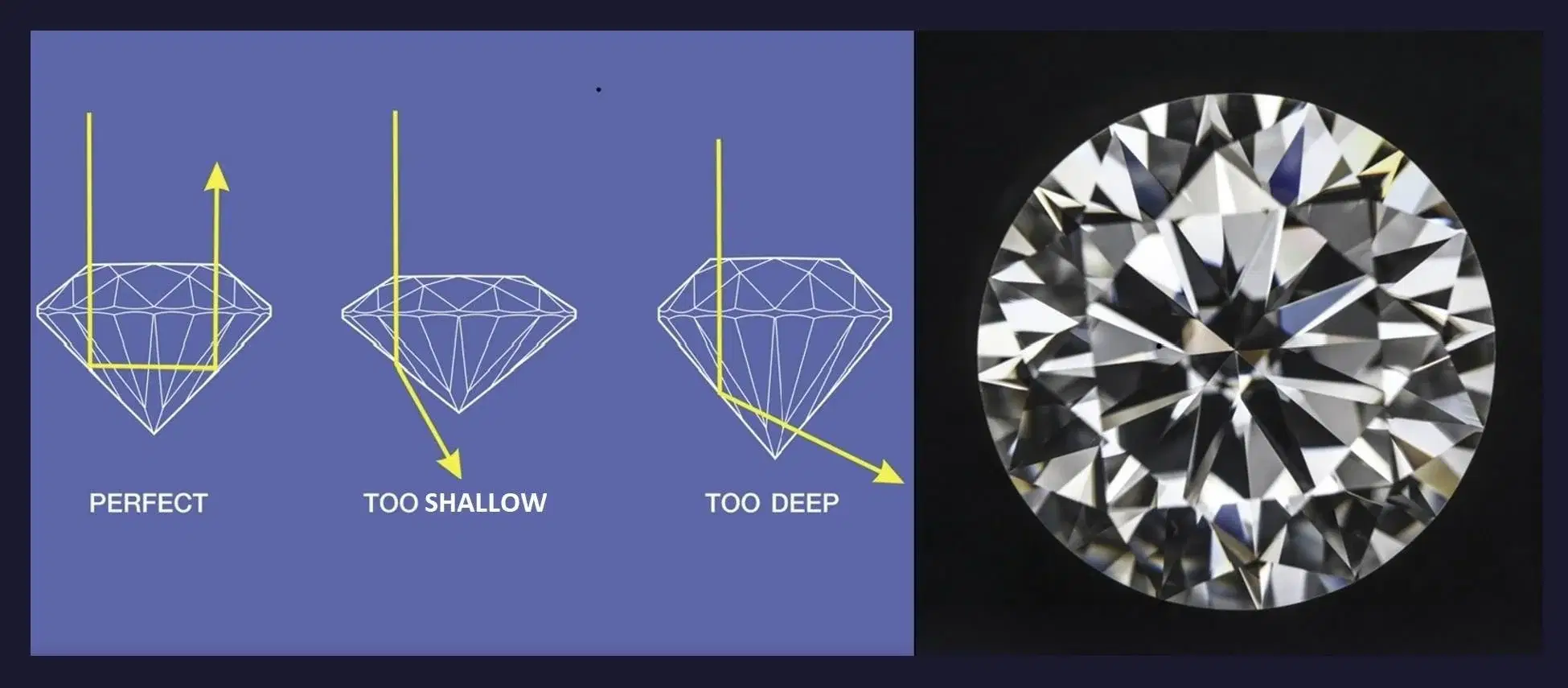The dimensions of a diamond's table and depth are crucial in determining both its value and overall appearance. Each diamond cut adheres to specific ideal ranges for these measurements, which vary depending on the diamond's shape.

This guide has been carefully curated to present the optimal depth and table ranges for a variety of diamond cuts, including Round, Princess, Cushion, Oval, Asscher, Radiant, Emerald, Pear, Marquise, and Heart shapes. Additionally, it offers useful tips to help you find a diamond that fits your budget.
This resource provides a concise breakdown of the ideal depth and table percentage ranges for each diamond cut. To visualize how these proportions impact a diamond’s appearance, we recommend using James Allen's 3D HD video technology for side-by-side comparisons.
|
Cut |
Depth% |
Table% |
|
Round Cut |
59 to 63 |
54 to 59 |
|
Ideal Princess Cut |
64 to 73 |
62 to 69 |
|
Ideal Oval Cut |
57 to 62 |
53 to 64 |
|
Ideal Radiant Cut |
61 to 67 |
62 to 70 |
|
Ideal Cushion Cut |
61 to 67 |
61 to 68 |
|
Ideal Emerald Cut |
61 to 67 |
62 to 70 |
|
Ideal Asscher Cut |
61 to 67 |
62 to 70 |
|
Ideal Marquise Cut |
57 to 62 |
53 to 64 |
|
Ideal Pear Cut |
57 to 62 |
53 to 64 |
|
Ideal Heart Cut |
57 to 62 |
53 to 64 |
When purchasing a diamond, it's natural to focus on its dimensions, color, and clarity—three of the four Cs: color, clarity, and carat. However, the fourth C, Cut, is equally important in determining a diamond's overall value.


